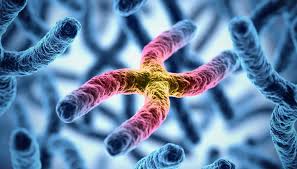LETS TALK ABOUT TELOMERES

 In all organisms, aging is the result of the decrease in the number and/or functions of cells. The root cause of aging is now well documented now; We age because our Cells age. Aging is the accumulation of damage of our cells and this damage drives the disease we die from- like cancer, heart attack, Diabetes and many more…
In all organisms, aging is the result of the decrease in the number and/or functions of cells. The root cause of aging is now well documented now; We age because our Cells age. Aging is the accumulation of damage of our cells and this damage drives the disease we die from- like cancer, heart attack, Diabetes and many more…
So, how and why the decrease of number of cells and its function happens?
The answer lies in the process of the cell division and replication in order to sustain life. TELOMERES are the ends of chromosomes, which have an essential role in protecting their integrity in the process of cellular replication.
A cell can divide itself not more than 70 times in its lifetime. Each time our cells divide and chromosomes replicate , our Telomeres become shorter. When we were first conceived, the telomeres in our single cell embryos are approximately 15,000 kb pairs. Our cells divide rapidly in the womb, and by the time we are born, our telomeres have decreased in length to approximately 10,000 kb pairs. They shorten throughout our lifetime and when they reach an average of about 5000 base pairs, our cells can no longer divide and we die of old age. This piece of information. is so vital to understand the importance of reducing the rate of Telomere shortening
Leonard Hayflick (known for his research in cell biology) discovered that there was clock ticking in every dividing cell of our body and telomere shortening explains that makes that clock tick.
Why are Telomeres Important?
Cells stop duplicating when telomeres become too short. Therefore, telomere length is considered to be an excellent biomarker of tissue renewal capacity , and consequently, of organismal aging. Telomere shortening has been demonstrated to impair the ability of stem cells to regenerate tissues when needed. Animal studies have shown that an accumulation of critically short Telomeres causes more rapid aging. Studies have shown that Short Telomeres contribute to the development of age – related diseases, primarily Lifestyle based diseases like- Cardiovascular, Cancer, Metabolic Diseases like Diabetes, Alzheimer’s, Parkinson’s, Arthritis/Osteoporosis, Infertility etc.
How Telomere Length measurement help us?
Telomere Length and telomere shortening rate vary in each individual and depend on a combination of the following factors:1. Genetics, 2. Environment and 3. Lifestyle. We can’t do much about the genetics but we can certainly manage our Environment and our Lifestyle. Lifelength Telomere Analysis Technology ® ( TAT ) test will help you:
- Gain better Insight into your aging process and your cellular health
- Monitor the effectiveness of age management and preventive medicine programs
- Contribute to earlier detection of chronic diseases.
- Provide risk stratification
- Develop personalised health plans and therapeutic treatments
The TAT® should be used as an annual test to establish the rate of biological aging and to monitor the efficacy of lifestyle programs and therapeutic interventions design to slow the aging process
Where and How the TAT test can be taken?
TAT® test is available in India through MEDITANTRAS ,who have partnered with Lifelength to make this technology available to this part of the world.
For TAT®, no special preparation or fasting required. It just require the drawing of 10 ml blood which can be done at the comfort of your home in any part of India. Prior to the test, the person can fill up the optional and anonymous online health questionnaire for improved accuracy. Once the processed sample (initial processing is done in a lab in India) reaches Lifelength central Lab, personalised comprehensive results report is made available in multiple languages, which normally takes three weeks to generate.
For more information on Telomeres and to take TAT® test, you can write to vineet@meditantras.com or call at 8800579881 or can visit Lifelength website www.lifelength.com

